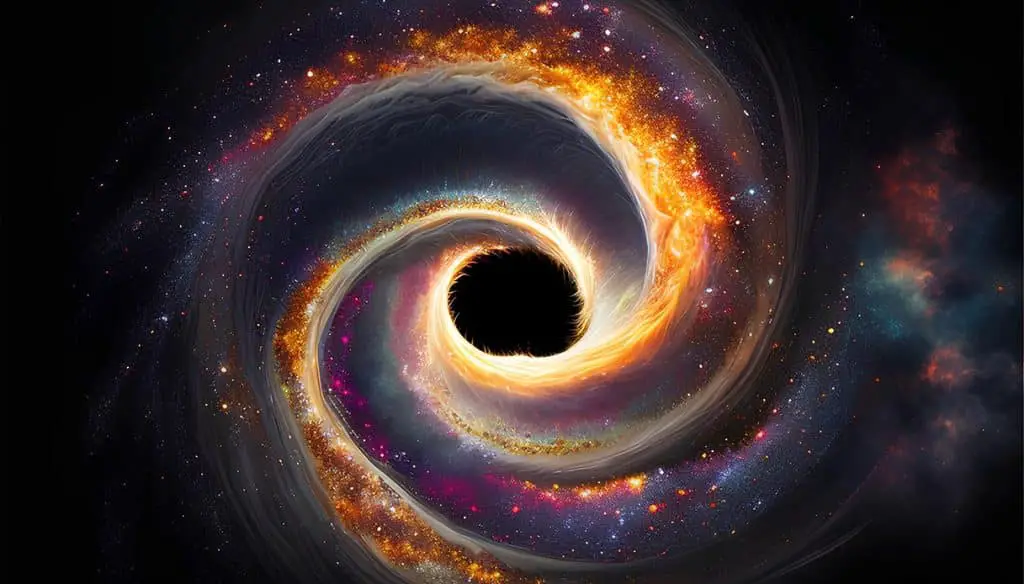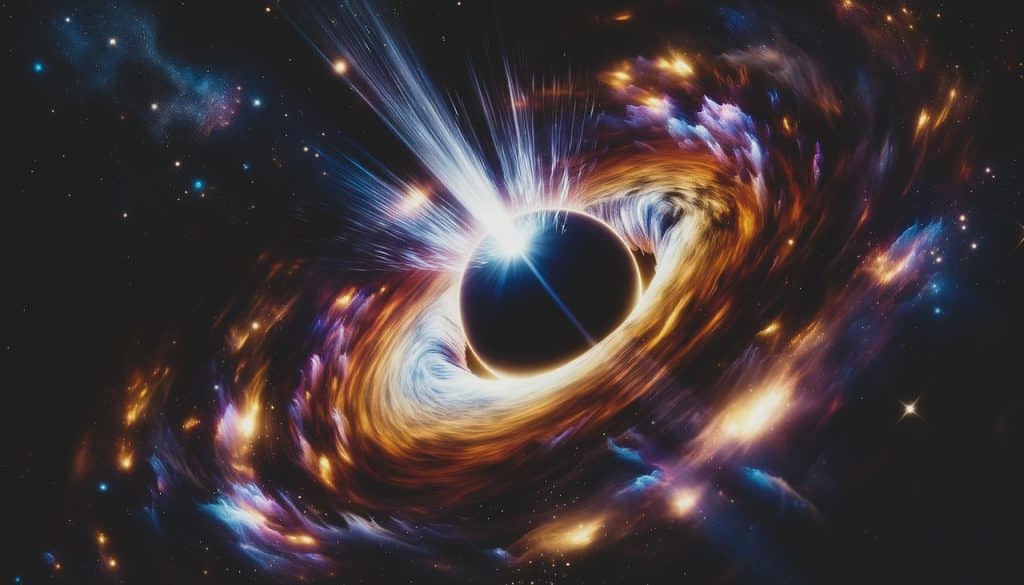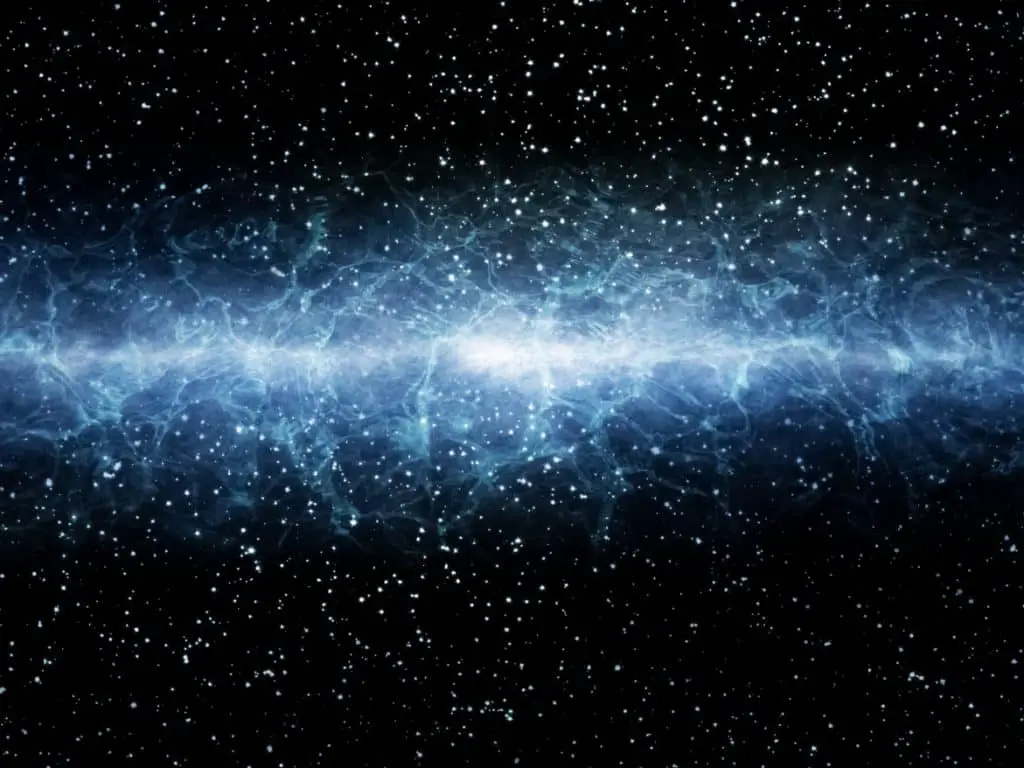Stars near the center of our galaxy are behaving strangely. There dark matter could be the explanation.
The function of dark matter
A team of scholars has discovered one potential new class of stars that could exist within a light-year of the center of the Milky Way and that could function by an unusual mechanism: the annihilation of dark matter.
This process would produce an outward pressure on stars other than hydrogen fusion, preventing them from collapsing gravitationally and making them essentially immortal, as their youth is constantly renewed. The results are published on the arXiv preprint server.
Collectively, the dark matter-fueled stars would occupy a new region of a long-established diagram that classifies stars by their temperature and luminosity, placing them far from the so-called main sequence where the vast majority of stars exist.
Observing our Galactic Center, around which the stars of the galaxy rotate, is quite difficult, since the region is extremely bright. At the center is a supermassive black hole, Sagittarius A*, with a mass four million times that of the Sun.
It is a light source of radio waves and was revived in 2022. Stars near Sgr A* orbit it at speeds of several thousand kilometers per second (compared to the sun’s orbital speed of 240 km/s).
These inner, nearby stars, called S-cluster stars, are very puzzling, with properties unlike any others in the Milky Way. Their provenance is unknown, as the environment within about three light-years of the center is considered hostile to star formation. They look much younger than you would expect if they had moved somewhere else.

Most mysterious of all, they appear unusually young, with fewer older stars nearby than expected, and, unexpectedly, there appear to be many heavy stars.
Stars are nuclear furnaces, generating heat by burning hydrogen through nuclear fusion. Thermal radiation resulting from this reaction, as well as the thermodynamic convection of stellar plasma, exerts an outward force on a star’s constituents, primarily hydrogen and helium. That strength is balanced by the internal strength of self-gravity.
The Hertzsprung-Russell (HR) diagram classifies stars by plotting their brightness versus the actual temperature of their surface. Excluding white dwarfs and red giants, the “main sequence” of this diagram curves from top left to bottom right, and most stars fall on this curve. (The sun falls near the center, since their brightness is represented by the ratio to that of the sun.) Stars at different positions in the sequence correspond to stars of different mass and age.
Dark matter also exists in the galaxy. Its presence was inferred from observations that found that ordinary matter is insufficient to explain the faster-than-expected rotation speeds of stars around the Galactic Center.
The density of dark matter is greatest near the center and decreases as one moves away from it. It is reasonable to expect it to be incorporated into stars near the center, where dark matter is densest.
If so, the annihilation of dark matter – dark matter particles and antiparticles colliding and producing photons, electrons, etc. – would exert additional outward pressure within a star and could even override nuclear fusion.
A research team from Stockholm and Stanford has found that by incorporating the power of dark matter into the dynamics of the innermost stars, those within about a third of a light year from the center (equivalent to about 8% of the distance from the closest star to the Sun ) – resolves many of the known paradoxes.
To incorporate the annihilation of dark matter, the team used relatively standard star formation parameters over the evolutionary course of the Milky Way and dark matter particles only slightly more massive than the proton.
Using a computer model of stellar evolution, they hypothesized that stars migrated along the main sequence toward the Galactic Center, then began injecting dark matter energy into the star’s composition. The star then evolved until it reached the red giant branch on the HR diagram, or until it reached an age of 10 billion years, the age of the Milky Way.

They calculated stellar populations without and with the presence of dark matter. With dark matter, more massive stars experienced a lower dark matter density and the hydrogen in their core fused more slowly and their evolution was slowed.
Stars in a region with a higher dark matter density changed significantly: they maintained equilibrium through burning dark matter with less or no fusion, which led to a new stellar population in a HR region above the main sequence.
“Our simulations show that stars can survive using only dark matter as fuel,” said co-lead author Isabelle John of Stockholm University, “and since there is an extremely large amount of dark matter near the Galactic Center, these stars become immortal, “remaining forever young, occupying a new, distinct, and observable region of the HR diagram.
Their model of dark matter may be able to explain many of the known mysteries. “In our simulations we see that lighter stars become very puffy and may even lose parts of their outer layers,” John said. He noted that “something similar to this could be observed at the Galactic Center: so-called G objects, which could be star-like, but with a cloud of gas around them.”
A limited number of individual stars are known to exist this close to the Galactic Center, as the region is extremely bright. Upcoming 30-meter telescopes will be able to see much better into the region, which will allow scientists to better understand the population of its stars and verify or rule out the dark main sequence.
Dark matter could help explain how supermassive black holes can merge
Although the exact nature of dark matter continues to elude astronomers, we have gained some understanding of its general physical properties. We know how it clusters around galaxies, how it makes up much of the matter in the universe, and even how it can interact with itself. A study examines how fast dark matter can move.
The study focuses on an effect known as dynamic friction. The term is a bit of a misnomer since it’s not the kind of friction you see between two objects sliding against each other. A better term to describe the effect might be gravitational drag. It was first studied by Subrahmanyan Chandrasekhar in 1943 and is caused by the gravitational interactions of a diffuse body.
Imagine a massive star moving through a cluster of red dwarf stars. Although it is unlikely that any of the stars will collide, gravitational interactions between them will influence stellar movements. The massive star will slow down as it leaves the cluster thanks to the gravitational pull of the red dwarf stars.

On the other hand, red dwarf stars will accelerate slightly as they are pulled slightly towards the massive star. If you follow the change in velocity of the stars in the cluster, you can determine how fast the cluster was moving before the collision.
The same effect can occur between matter and dark matter. The presence of dark matter influences the movement of stars in the galaxy and, thanks to dynamic friction, this distorts the shape of the galaxy.
By mapping how the galaxy is distorted, the team can calculate the movement of dark matter near the galaxy. So the team focused on searching for distorted galaxies that are not part of a dense galaxy cluster. Since galaxies are quite isolated, the distortion must occur due to dark matter.
The authors then compared the shape of these distorted galaxies with N-body simulations to map the movement of dark matter. One concern they had was that the uncertainty in the data would be too large to impose significant constraints on dark matter.
The team showed that, for the available samples, the data dispersion is only around 10%. This means it is precise enough to be applied to nearby galaxies. For example, Gaia’s detailed observations of the Large Magellanic Cloud should allow astronomers to understand the speed of dark matter there.
This approach offers astronomers an additional tool for studying dark matter. As future observations allow us to precisely define the properties of dark matter, we may be able to determine what dark matter really is.
#Dark #matter #innermost #stars #galaxy #immortal

